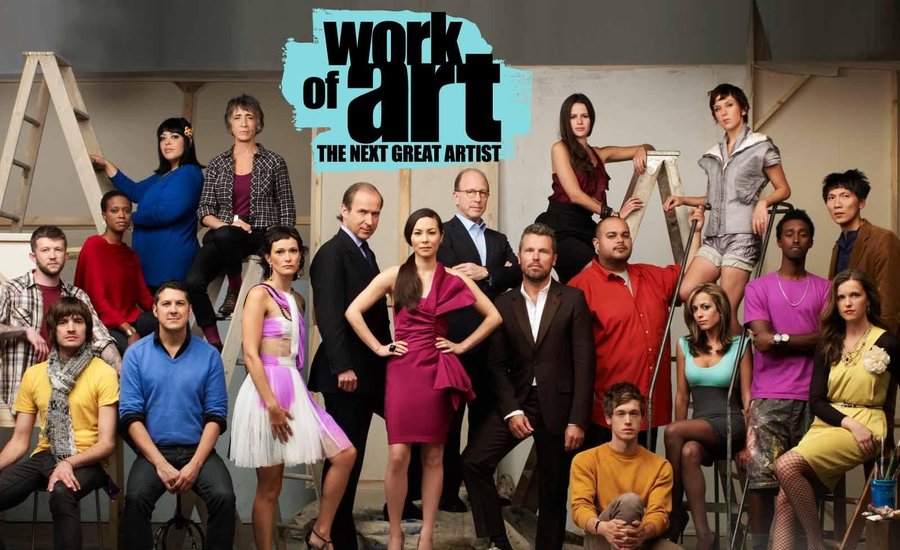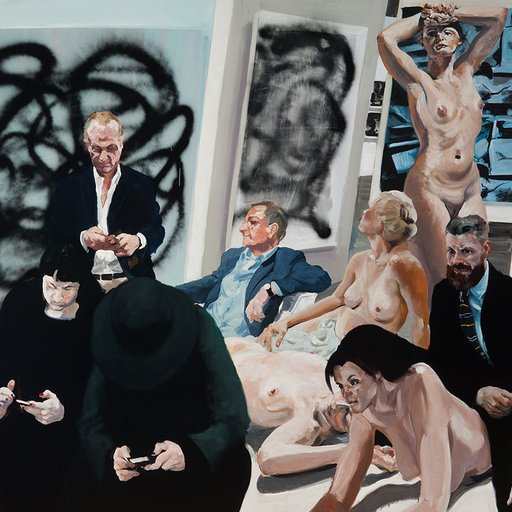Imagining a world in which reality television never came to play in the cultural playground feels like a fantasy so utopian in its implications, it’s basically stupid. Like so many of the awful things we obsess over today, the populist entertainment genre gained its foothold in the early ‘00s, creating the cultural phenomenon of “hate-watching” (watching a television show you hate because you hate it) as a thing we do collectively. While early 1900s Europe can be characterized by a collective sense of war-torn, existential ennui, we here and now are defined by a post-capitalist need to hate-watch.
You can call it sad, or bad, or simply a sign of the times—regardless, reality television has undeniably been one of the most impactful and ubiquitous cultural influencers this side of the century. Who would our POTUS be without 14 seasons of
The Apprentice
selling the American people the Trump brand? Cardi B might’ve never blessed the world with “Bodak Yellow” if it weren’t for her presence on
Love and Hip Hop
. How would we be able to dismiss someone with grace and style without RuPaul’s “Sashay away?” What is a Kardashian?
Apart from bless-cursing us with a new inlet for celebrity culture, shows like
Project Runway
,
America’s Next Top Model
, and
Top Chef
also did us the favor of rendering previously opaque industries transparent, lifting the curtain to expose what dictates quality and good taste to those of us who cultural snobs refer to as “regular people.” And yet, there is one industry that has proven itself impervious to the hand of reality TV: the oft-regarded unintelligible, elitist world of fine art. Despite its influence in shaping our broader cultural fabric, reality television has had practically no luck finding traction on the slippery slopes of the art world… though not for a lack of trying.
Just as The Apprentice was used as a vehicle for Trump to peddle and revitalize his brand, the 2006 reality TV show Artstar feels a lot like curator and art collector Jeffrey Deitch’s attempt to capitalize on his own cultural empire. Each episode is chock full of industry insiders and established artists like Jeff Koons and Kehinde Wiley discussing their own roles and perspectives whilst singing their highest praises for Deitch.
Looking to discontinue the myth of the one-shot, one-opportunity success narrative, the show consciously avoids being a competition. Instead, the show focuses primarily on how artists develop both inside and outside their studios. Unfortunately, however noble that position may be, it doesn’t make for great (or even very watchable) television. Ending after just one season, the show’s biggest downfall (apart from its blatant self-promotion) is that it’s just really boring. For how purportedly eccentric artists and their associates are made out to be, Deitch’s Artstar is a snooze-fest. Sadly, without the drama of competition, the show falls flat.
Answering the call for some manufactured melodrama came Bravo’s 2010 series, Work of Art: The Next Great Artist. Modeled after the previous successes of shows like Project Runway and America’s Next Top Model, this show is a competition—cue the line, “I’m not here to make friends.” Along with a $100,000 Fiat-funded cash prize, and a spread in Blue Canvas Magazine , the grand prize winner is awarded with a solo show at the Brooklyn Museum . You read that right. A solo show. At the Brooklyn Museum. Staying true to the Project Runway formula, Swiss auctioneer and art collector Simon De Pury is Work of Art ’s Tim Gunn, model and actress China Chow is Heidi Klum, critic and New York icon Jerry Saltz and art dealer Bill Powers are the resident judges (the third seat is reserved for a guest judge specific to each episode), and to top it all off, the show is produced by none other than the illustrious Sarah Jessica Parker who appears gleefully, and often.
For a show that’s off the bat problematic—Jerry Saltz wrote a scathing and honest self-critique of the show’s pitfalls after its first season (the show only ran for two) that exposes a seriously abusive film schedule and the fact that it portrays a completely unrealistic success model for artists—it’s super watchable. It’s basically watching art school on steroids. The contestants are diverse, ranging from somewhat established artists to complete institutional outsiders, and the critiques are usually pretty spot-on and legitimate. The interpersonal drama is trite and manufactured enough for viewers to establish character favorites, and honestly, a lot of the work is pretty good!
Ultimately, however, the show failed critically in that it was unable to be taken seriously outside of itself. Unlike the contestants from Project Runway , participants on this show gain no lasting merit from being reality television’s “Next Great Artist.” In an industry that runs almost exclusively on what can be reductively summarized as "street cred," Work of Art has zero art-world credibility (a trustee for the Brooklyn Museum reportedly resigned due to the institution’s participation). Unappealing to industry insiders, without breakout stars, the show also lost its appeal to a general public, therefore providing no real audience for this would-be hit television show (its first season actually received rave reviews and higher ratings than Project Runway ’s first season).
Problematic as it is, at least Work of Art is somewhat sincere and altruistic in its ambitions, and actually does stimulate some great conversation. In his critique, Saltz reflects on how during the airing of the show on Bravo, hundreds of people stopped him on the street to talk about art, or post comments online: "In the middle of nowhere, I’d be having passionate discussions about art with laypeople. It happened in the hundreds, then thousands of comments that appeared below the recaps I wrote for nymag.com. Many of these came from people who said they’d never written about art before. Most were as articulate as any critic."
Following the fallout of
Work of Art
came a slew of other attempts to make reality tv work for art. They are all gag-worthy. These apex hate-watching shows include a lifestyle series á la
Jersey Shore
or
Real Housewives
called (brace yourself)
Gallery Girls
that follows a group of young women (it’s worth noting that most of the referent “girls” are in their 30s) trying to make it in the New York gallery scene—viewer be warned, a Manhattan versus Brooklyn “rivalry” is played out in a way that will make any native New Yorker’s head explode. Then there’s
Artbreakers
, an Ovation show that follows two art advisors who got their "MFAs from Sotheby's" (Sotheby's doesn't have an MFA program, by the way.) We’ll just leave the show’s premiere promo teaser here:
Like Work of Art , these shows find their fault in that they are appealing to no one—the art world is too pretentious to watch, and laypeople don't have any cause to care. While the art world has proven itself bitterly unyielding to the exploitative mechanisms of reality television simply by being its elitist, inaccessible self, there are plenty of remarkable programs that do a great job of explaining art. Art21 's programming, for example, is so canonical and highly regarded, it's an institution in and of itself—any artist with an Art21 profile gains an almost undisputed artistic street cred up and down the aisle. Programs like artist Jayson Musson 's Art Thoughtz (on youtube) and Casey Jane Ellison 's Touching the Art (produced by Ovation) offer refreshing, tongue-in-cheek breakdowns of some of art's most slippery and elusive topics.
In
Art Thoughtz
, Musson adopts the persona of Hennessy Youngman (aka: The Pharoah Hennessy, aka: The Rowhouse Raconteur) as a way to break down the stereotypes of who discusses what (and how) in art. Youngman is as ready and eager to explain concepts like
Relational Aesthetics
or Post-Structuralism to you as he is ready to send you the link to his latest fire mixtape. Meanwhile, Casey Jane Ellison is intersectional feminism's take on dissecting the art world. Billed as the "first talk show about art,"
Touching the Art
tackles art's role as a patriarchal talk-box by hosting only women to discuss uncompromising topics like "Terrorism & The Global Market." As a host, Ellison cuts through art's institutionally dry, scary, but nonetheless critical dialogues with so much cutting edge, intelligent, and #woke humor, you are left on the edge of your seat wanting more.
It seems that the art world's fixation and relationship with reality television is a heavily enforced one-way street. This past August, the small Chinatown gallery
Sleep Center
hosted "Here For The Right Reasons"—a one night group show featuring works that grapple with the hit reality TV series,
The Bachelor
. In the show's press release, curator Artie Niederhoffer writes that, "in a healthy society,
The Bachelor
would be illegal. Gotta get my fix while society's still sick." While the pop-irony, voyeurism, and melodrama of art finds fertile ground in investigating reality television, reality television may never lay its post-capitalist, hate-watchy hands on the authentic aura of contemporary art.
RELATED ARTICLES:
What "Gossip Girl" Got Right (And Wrong) About the Art World
21 Actually Fascinating Things You Didn't Know About Jeffrey Deitch
Q&A: Jerry Saltz Responds to Being Called "The Donald Trump of Art Social Media"
























